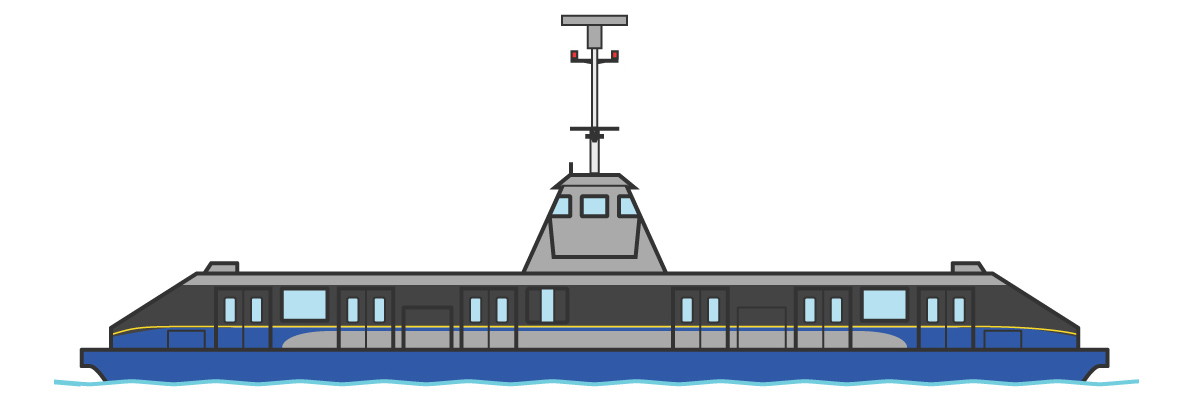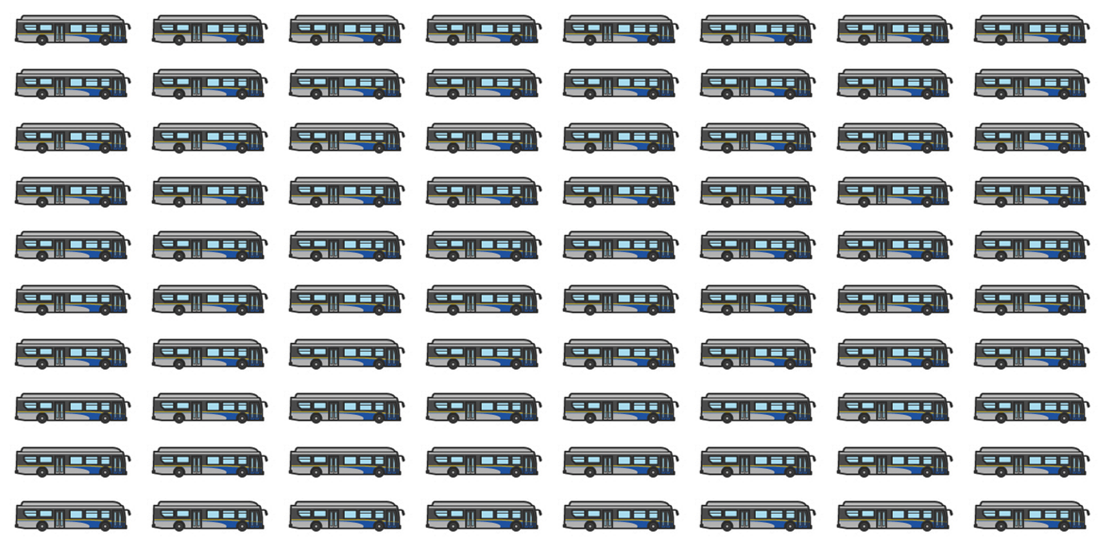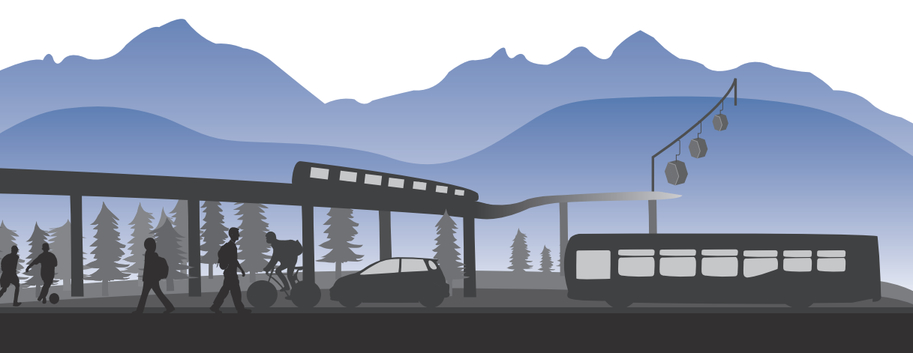
The federal government will provide TransLink with $370 million for its “initial” investment into Metro Vancouver’s public transit system, but details are slim at this time on where exactly it will go to.
The Mayors’ Council governing the public transit authority says a portion of it will be used to accelerate the planning processes of the $1.9 billion underground SkyTrain extension of the Millennium Line under Broadway from VCC-Clark to Arbutus and $2.6 billion for Surrey’s 27-kilometre-long light rail transit network.
But this means construction will not likely start until the early-2020s at the very earliest, when the significantly larger phase two of federal infrastructure commitments kicks in. And with construction spanning over a period of four to five years, transit users in the region will not be able to use these new services until the mid-2020s.
The reality is Metro Vancouver is not ready to receive an immediate financial commitment from the federal government to help cover both of Vancouver and Surrey’s projects: These projects are far from being “shovel ready”, a stipulation for the first phase of federal funding.
Much more planning work still needs to be done, which will lead to a project definition report, business case report, public consultations, environmental assessments, procurement, and the selection of a construction contractor. Using the timelines of the Canada Line and Evergreen extension projects, all of this planning work will take four to five years to complete – conveniently leading right into the start of phase two, if all goes as planned.
The main obstacle will be with the provincial government and its role in determining whether and how TransLink can cover its share of the cost to fund the projects. It insists that any new funding that requires new legislation requires a plebiscite or referendum.
Last year’s transit plebiscite, enforced by Premier Christy Clark, rejected the Mayors’ Council proposal of introducing a half per cent regional sales tax to generate $250 million in new annual funding. Clark has not ruled out another referendum on any new methods to find the revenue needed, including tolls and a vehicle levy.
Prime Minister Justin Trudeau’s first budget indicated the federal government is moving to cover up to 50% of the cost of new public transit projects, an increase from the traditional one-third model. With the provincial government already committing 33%, based on the old model, that could potentially leave TransLink with a share of 17% – down significantly from 33%. This amounts to approximately $765 million of the combined $4.5 billion cost of the Broadway subway and Surrey LRT, assuming the federal level will reach the 50% cap.
“We’re pleased to hear of the Federal Government’s commitment to transit and transportation infrastructure in the coming years,” TransLink CEO Kevin Desmond told Vancity Buzz. “This brings us one step closer to moving forward with critical infrastructure projects identified in the Mayors’ Vision which require funding from senior government partners.”
“We look forward to continuing to work with our federal, provincial and municipal partners to ensure we’re ready to go on these important investments.”
The remaining federal funds, beyond what will be used to accelerate project planning, will go towards “maintenance and upgrades” to existing transit infrastructure.
However, it will not be going towards the $71 million budgeted for SkyTrain upgrades recommended by an independent review in fall 2014 to prevent breakdowns of the train system. TransLink says Gary McNeil’s 20 recommendations, including the installation of an auto-restart to the train automation system and the separation of critical systems, will be fully implemented using existing resources.
Essentially, the federal government’s $370 million will not be going into any upgrade that increases operational costs significantly since TransLink does not have the financial capacity to accommodate any major increase.
When planning or introducing a new or improved transit service, planners must not only consider the initial cost of construction but also the annual operational and maintenance costs added – whether a new service can be financially sustainable.
For instance, the combined annual rail operations and maintenance cost of all three existing SkyTrain lines and the West Coast Express exceeds $250 million. Buses cost over $640 million, with almost $10.5 million going to the 99 B-Line – the region’s busiest bus route – and $10.3 million for the SeaBus ferries.
But if TransLink had the financial capacity to sustain more annual operational and maintenance costs, it could fulfill some of the Mayors’ Council $7.5 billion plan using the federal government’s $370 million:
9 new 4-car trains for the Expo, Millennium and Evergreen lines
- Cost: $108 million ($3 million per car from Bombardier; 36 cars paired into nine four-car articulated trains)

Image: Peter Dovak
10 new 2-car trains for the Canada Line
- Cost: $50 million ($2.5 million per car from Hyundai Rotem; 20 cars paired into 10 two-car trains)

Image: Peter Dovak
1 new SeaBus vessel
- Cost: $25 million

Image: Peter Dovak
80 new 12-metre buses
- Cost: $40 million ($500,000 per bus)

Image: Peter Dovak
27 new 18-metre articulated buses
- Cost: $27 million ($1 million per 18-metre articulated bus)

Image: Peter Dovak
Simon Fraser University Gondola
- Cost: $120 million (As proposed by TransLink: from the Millennium Line’s Production Way-University Station to the top of Burnaby Mountain, similar to Whistler Blackcomb’s Peak 2 Peak Gondola. While it was studied by TransLink in 2010-2011, it was not listed as a priority for the Mayors’ Council.)

Image: TransLink
All of this comes to $370 million.
For all intents and purposes, if the federal funding were used for building a segment of the Broadway subway, it would barely build a useable spur. Any spending for construction would have to come after what has been designated for project planning.
There are high start-up costs with setting up the tunnel boring machine, such as ordering the machine itself and digging a launch pit. To build the actual bored tunnel, there are more initial costs associated with creating the process needed to manufacture the pre-cast concrete tunnel segments somewhere in the region.
Construction would start from the tail end of the Millennium Line at VCC-Clark Station, with the track reaching ground level for an at-grade station on the False Creek Flats to serve the digital arts campus. The bored tunnel would begin just after the first station, winding south to begin the route to the site of the underground station located at the intersection of Broadway and Main Street.
With platforms 80 metres in length, a ground-level station at the False Creek Flats will cost at least $50 million while an underground station will cost a minimum of $100 million.

